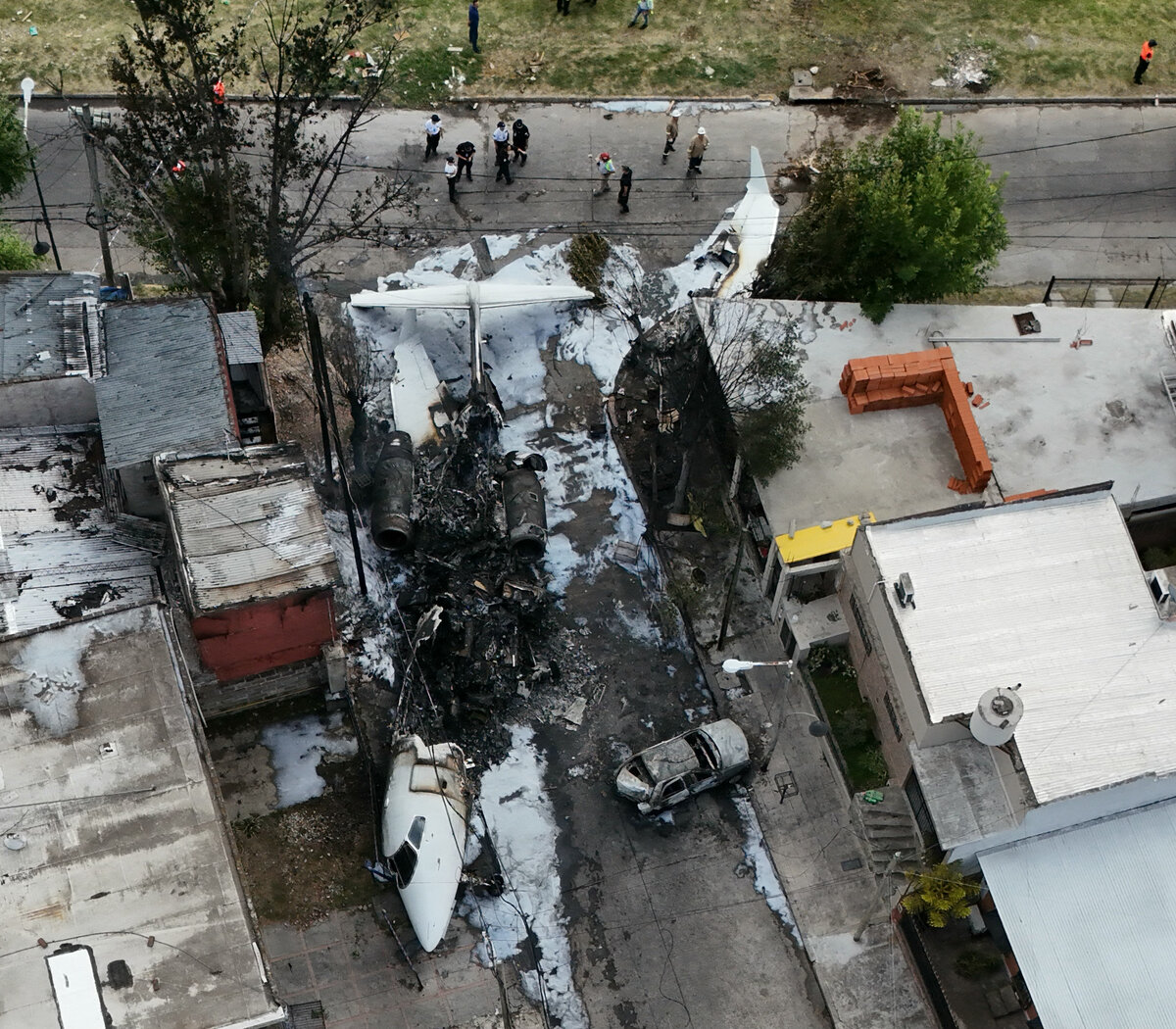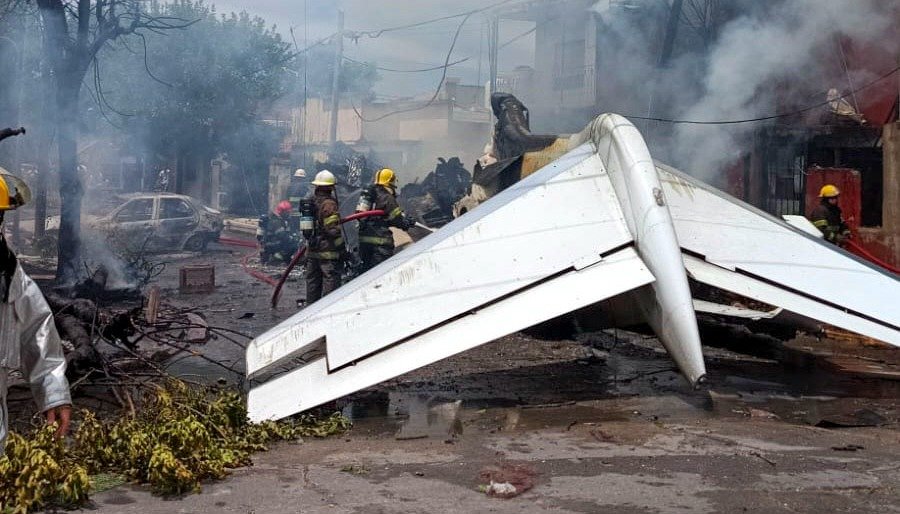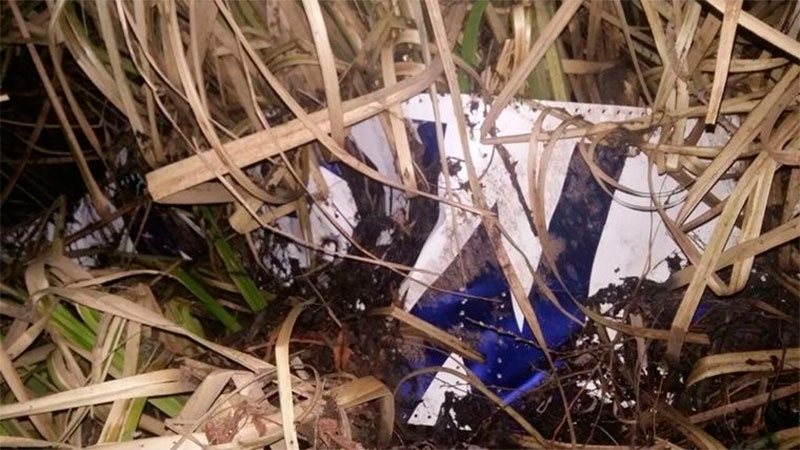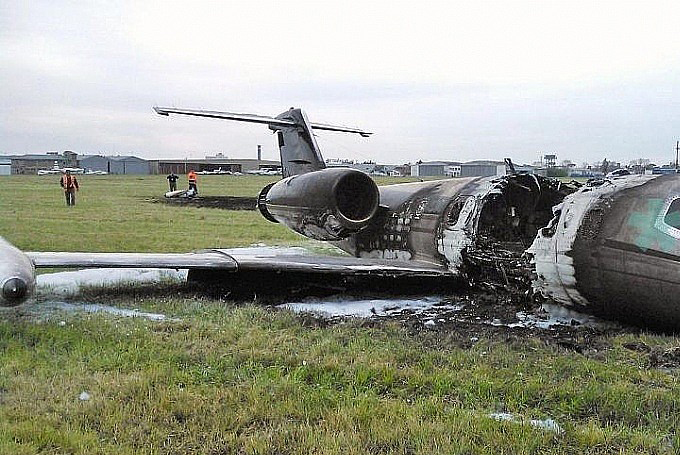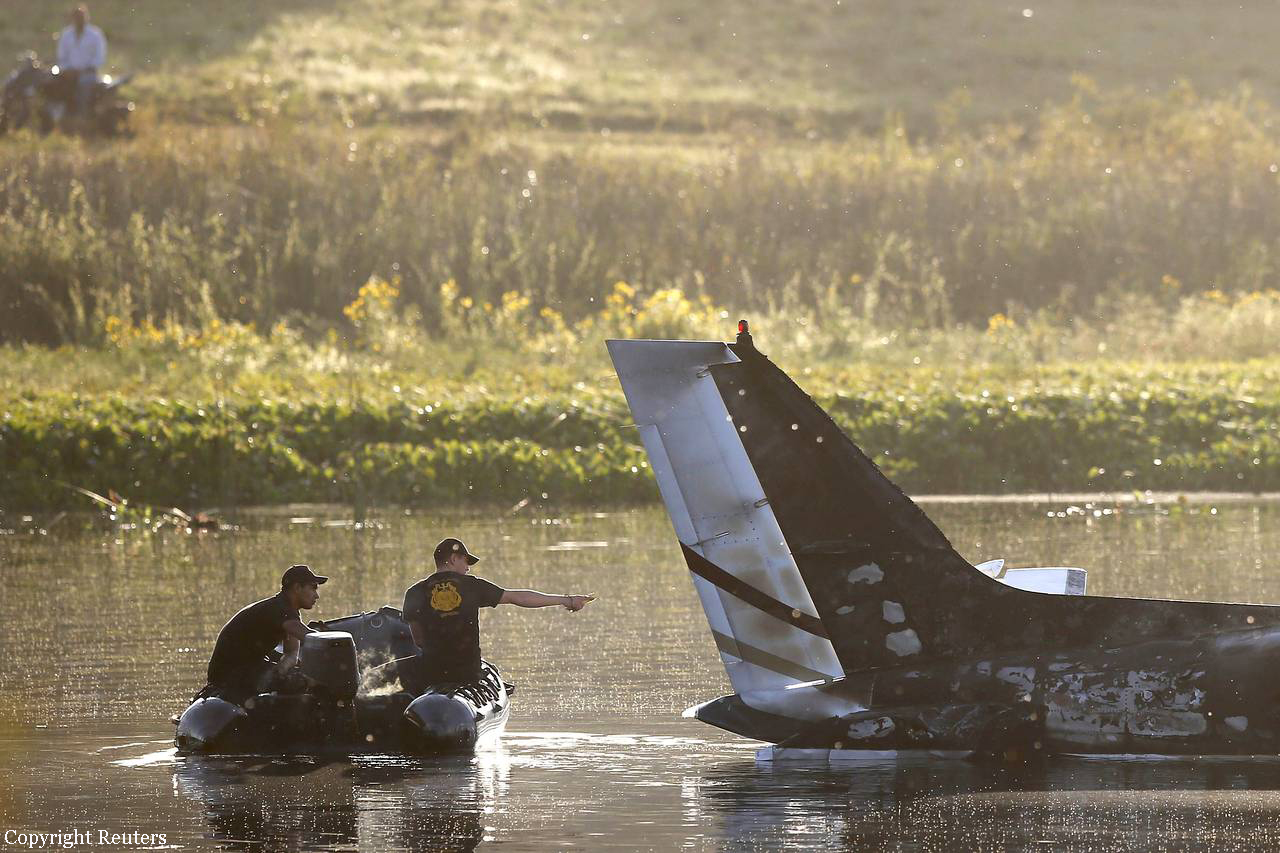Crash of a Bombardier BD-100-1A10 Challenger 300 in Buenos Aires: 2 killed
Date & Time:
Dec 18, 2024 at 1320 LT
Registration:
LV-GOK
Survivors:
No
Schedule:
Punta del Este - Buenos Aires
MSN:
20227
YOM:
2008
Crew on board:
2
Crew fatalities:
Pax on board:
0
Pax fatalities:
Other fatalities:
Total fatalities:
2
Circumstances:
The crew was completing a positioning flight from Punta del Este to the airport of San Fernando in Buenos Aires. After landing on runway 05, the crew initiated the braking procedure but, for unknown reasons, the airplane was unable to stop within the remaining distance (runway 05 is 1,690 metres long). After the airplane overran the runway, the crew turned to the right to avoid runway 23 landing equipment. The airplane rolled for about 200 metres in a grassy area, crossed the perimeter fence and a small road before crashing in a street, bursting into flames. The airplane was totally destroyed and both pilots were killed. The airplane was owned by the Argentinian company New Lines, property of the businessman Jorge Pablo Brito.

